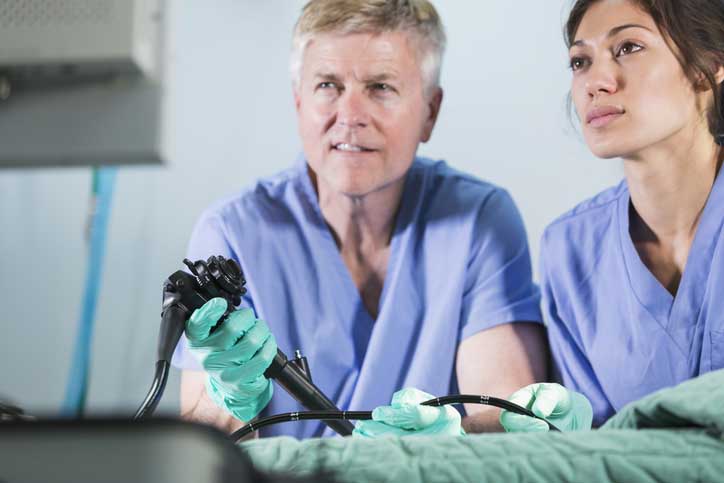 Researchers at the ARC Centre for Excellence in Nanoscale BioPhotonics (CNBP) discovered an exciting new method that could make it possible to use 3D microscopy to view hard-to-reach areas of the human body. This method uses fiber optic bundles to miniaturize a type of 3D imaging called “light field imaging.” Taken to extreme new levels, this imaging could make in-body use possible.
Researchers at the ARC Centre for Excellence in Nanoscale BioPhotonics (CNBP) discovered an exciting new method that could make it possible to use 3D microscopy to view hard-to-reach areas of the human body. This method uses fiber optic bundles to miniaturize a type of 3D imaging called “light field imaging.” Taken to extreme new levels, this imaging could make in-body use possible.
This method could find widespread use in diagnostic procedures called optical biopsies. In these biopsies, suspicious body tissue is investigated using medical endoscopic procedures.
Until now, light field imaging could be performed only with bulky hardware such as camera arrays or modified consumer cameras. Instead of trying to shrink existing equipment, the researchers realized that fiber optic bundles already used routinely in microendoscopy were actually suitable light field imaging devices.
Fiber optic bundles are groups of tens of thousands of microscopic optical fibers. Each fiber in the bundle acts like a pixel in a camera. The result produced is a 2D image that is transmitted through the fiber bundle.
Along with recording a 2D picture, light field imaging systems also measure the incoming angles of all light rays in the picture. With this information, doctors can map the picture in stereo 3D in the same way that humans perceive depth. According to the researchers, the primary challenge will be how to record this angular light ray dimension that is often hard to capture.
According to Dr. Antony Orth, project lead and Research Fellow at the RMIT University node of the CNBP, “The key observation we made is that light ray orientation information is actually transmitted by the fiber optic bundles to the microendoscope. You just need to know what to look for and how to decode it.”
Dr. Orth believes that, given the right mathematical framework, researchers can decode the patterns, transform them into a light field, and do incredible things such as refocusing, depth mapping and visualizing the image in stereo 3D. He believes that this light field technology could potentially bring an entirely new depth dimension into optical biopsies. This capability would let doctors examine suspect tissue without removing a sample from the patient.
The research group is meeting with physicians to discuss how to test this technique in medical clinics and to also identify the medical procedures most likely to benefit from 3D visualization in the microscale.
 Many land and oceanic oil operations use temperature sensing to help improve safety and functionality in harsh environments. Optical fibers used in these conditions are routinely exposed to high temperatures and pressures, along with ionizing radiation and aggressive chemicals in the surroundings.
Many land and oceanic oil operations use temperature sensing to help improve safety and functionality in harsh environments. Optical fibers used in these conditions are routinely exposed to high temperatures and pressures, along with ionizing radiation and aggressive chemicals in the surroundings.
Given these extremes, companies are increasingly using silica-based optical fibers for both acoustic and distributed temperature sensing. These fibers offer advanced properties including superior thermal stability and mechanical robustness. They are also able to transmit optical power with minimal added attenuation or signal loss.
While researchers have thoroughly studied the mechanical strength of optical fibers under ambient conditions, they have rarely examined fibers after exposure to elevated temperatures and/or liquids. In fact, to the best of our knowledge, there is no systematic data documenting the mechanical strength of optical fibers placed under high temperatures and pressures such as those experienced in temperature sensing.
That’s why when Andrei Stolov of OFS decided to perform an experimental study, he was operating in somewhat “unknown territory.” Before beginning the experiment, Stolov realized that a number of factors would influence whether optical fibers could survive the harsh conditions found in oil operations. These aspects include the type of fiber coating, environment, temperature, pressure and usage time.
When optical fibers are used at elevated temperatures or in aggressive environments, the most frequent indications of failure are added attenuation or loss of mechanical strength. In Stolov’s study, he used strength degradation as his criteria for failure.
In his experiment, Stolov submerged a range of optical fibers with various coatings into four high-temperature/high-pressure fluids, namely (1) distilled water; (2) sea water; (3) isopropyl alcohol (IPA); and (4) paraffin oil. Undersea and downhole applications primarily drove his choice of fluids. In these situations, fibers can be exposed to these or similar environments.
To learn more about the study and the results, please go HERE.
 Making an overseas phone call? Using cloud computing? If so, there’s a 99 percent chance your call or message is being carried by an undersea fiber optic cable.
Making an overseas phone call? Using cloud computing? If so, there’s a 99 percent chance your call or message is being carried by an undersea fiber optic cable.
Now, new research with lasers may let service providers “push” even more data through these cables to help meet the booming demand for transmission between North America and Europe. In fact, this new method could even increase network capacity without requiring new ocean cables, which can cost hundreds of millions of dollars to manufacture and install.
Setting A New Standard
A research team from Infinera has set a new efficiency standard for transatlantic fiber optic cables. Testing 16QAM modulation – a new approach to transmitting light signals — the group not only shattered efficiency records for data transfer. They nearly doubled data capacity and approached the assumed upper limit for this type of transmission.
The team managed to extend record-setting capacity across the Atlantic Ocean using the MAREA transatlantic cable. This cable spans approximately 4,104 miles (6,605 kilometers) from Virginia Beach, Virginia, to Bilbao, Spain. Partially funded by Facebook and Microsoft, MAREA now holds the record for the highest-capacity cable crossing the Atlantic Ocean.
Skyrocketing Demand
The need for new and better optical fiber and fiber optic cables has constantly grown since the first undersea trans-Atlantic cable was installed back in 1858. Because of the move to cloud-based computing, that demand has skyrocketed over the past decade.
It’s important to note that while this was the first time that PM-16QAM signals were sent over this distance, the team combined equipment readily available to the industry with high-speed lasers to make the transmission. The team generated signal speeds reaching 26.2 terabits per second, a 20 percent increase over what cable developers believed was possible.
Even More Good News
This experiment delivered results much the same as next-generation chip sets from other vendors that use a different technique called probabilistic constellation shaping (PCS). According to the research team, the good news for service providers is that the new technique can be combined with PCS for even faster speeds in the future.
The group presented their research results at OFC 2019 in San Diego.
Already known as the state’s first gigabit city, Wilson, North Carolina, is now also that state’s first city to offer a “Fiber Optics Basics” training course at its local community college. Last month, Wilson Greenlight, the city’s community-owned, fiber-to-the-home provider, partnered with Wilson Community College to launch the pilot 10-week program.
A Long-Held Dream
The fiber optic training course is the answer to a long-held dream for Gene Scott, Wilson Greenlight’s director of outside plant. Frustrated by having highly-skilled jobs to offer that he could not fill, Scott found that standard fiber training courses cost thousands of dollars that few young people could afford.
Experts Share Knowledge/Expertise
Visiting experts from around North Carolina and the U.S. are volunteering to teach their specialty. For example, OFS expert Mark Boxer is teaching three classes covering topics ranging from the history of light wave transmission to the design of various fiber optic networks.
In one of these classes, Boxer featured a very special guest, Dr. Peter Charles Schultz. Dr. Schultz is a co-inventor of fiber optics and the recipient of the National Medal of Technology and Innovation presented by President Bill Clinton (the highest technology award of the U.S. Government). Dr. Schultz also serves as a senior advisor to and board member of OFS. During the class, Dr. Schultz described his experiences in developing fiber optics, something that few people at the time understood or valued. When asked his advice to others who might seek to blaze a new trail in the digital frontier, Schultz answered, “Be brave!”
Training for Today and Tomorrow
Other courses in the program range from how to prepare, splice and connect fiber optic cables to fiber optic safety. Instructors will expose students to various types of fiber networks, the basics on how to design a fiber-to-the-home network, how to maintain outside plant infrastructure and even how to budget and read engineering design prints.
The long-range plan is to offer a two-year partnership between a local high school and the community college. Students would leave high school with a two-year certificate in an advanced degree and qualify for higher-paying jobs after graduation. One added advantage would be to pique students’ interest in tackling a four-year college degree in new fields like fiber network management
 Researchers hope to use networks of unused, dark fiber optic cables to help detect underground sound waves that can warn of an impending earthquake.
Researchers hope to use networks of unused, dark fiber optic cables to help detect underground sound waves that can warn of an impending earthquake.
Millions of miles of unused, dark fiber optic cables are installed underground. A research team of scientists from the University of California (Berkeley) and Lawrence Berkeley National Lab have been experimenting with a new predictive technique. This method may gather measurements of movement in the Earth’s crust that are superior to those obtained by current seismic detection systems.
Measuring Activity
In seismology, scientists often have only a small number of sensors to use in detecting earthquakes. This is one reason why measuring vibrations through the Earth’s surface is an uneven, “touch-and-go” venture. Also, some seismically-active areas have many sensors on hand, while places distant from shifting tectonic plates may have very few. This variation in equipment can make it tough to measure seismic vibrations in places where, for example, fracking triggers earthquakes. Using the new method, users could turn each fiber optic cable length of a few feet into an individual seismic sensor.
In this new experiment, the research team “borrowed” from other groups who have developed distributed acoustic sensing (DAS) methods. In DAS, laser pulses are used to detect minute vibrations along optical fiber/cable. Researchers insert units called interrogators along the optical fiber/cable. These interrogator units send out and sense short infrared laser pulses. Triggered by seismic activity, tiny strains on the optical fibers cause some of the laser light to be reflected and then bounced back to the sensor. By sending rapid pulses, the scientists can detect changes in the light scattering over time. By knowing the speed of light, they can pinpoint where the activity occurred.
“Real World” Testing
With this latest technique, the researchers essentially tested the DAS method in the real world. They plugged their interrogators into the fiber optic cable line along the Department of Energy’s Dark Fiber Testbed. This 13,000-mile stretch of telecommunications fiber in the western U.S. is used for testing new communications equipment. The researchers targeted a 17-mile cable segment near West Sacramento, California, and recorded data from July 28, 2017, up to January 18, 2018.
The research team successfully recorded information on the speed of sound waves traveling through the Earth. In fact, during September 2017, they detected and measured the massive 8.1 magnitude earthquake in Mexico (the strongest quake to hit Mexico in a century).
Unfortunately, this detection technique isn’t ready to be used beyond research. But keep an eye open for possible use in the future!
 Today the United Nations, its partners and women and girls around the world are marking the International Day of Women and Girls in Science.
Today the United Nations, its partners and women and girls around the world are marking the International Day of Women and Girls in Science.
Recent studies suggest that 65 per cent of children entering primary school today will have jobs that do not yet exist. While more girls are attending school than ever before, girls are significantly underrepresented in Science, Technology, Engineering and Math (STEM) subjects in many settings. They also appear to lose interest in STEM subjects as they reach adolescence. In addition, less than 30 percent of researchers worldwide are women.
As a step forward in reversing these trends, the April 2018 National Math and Science Initiative’s “Yes, She Did” campaign honored female STEM inventors. During the campaign, teachers, students, grandmothers and education enthusiasts voted fiber optic cable as the most impactful woman-influenced innovation.
One of the women highlighted in the campaign is Shirley Jackson, the first African-American woman to earn a doctorate from the Massachusetts Institute of Technology (MIT) and the first African-American woman to be awarded the National Medal of Science. She is credited with scientific research that enabled the invention of such things as the portable fax, touch-tone telephone, solar cells and fiber optic cable.
“It’s madness that women aren’t always recognized for their STEM contributions,” the National Math and Science Initiative (NMSI) wrote in introducing its social media audiences to the women behind eight highly impactful innovations. In addition to fiber optic cable, NMSI highlighted the women behind the circular saw, Laserphaco probe, dishwasher, Kevlar® Fiber, modern home security system, computer programming and NASA’s space bumper.
“Fiber optic cable shrunk the global marketplace and now everything’s connected real-time to be faster, better, stronger,” said NMSI Chief Information Officer Rick Doucette.
On this International Day of Women and Girls in Science, let’s change the trends on women in science and technology. Join us in celebrating women and girls who are leading innovation and call for actions to remove all barriers that hold them back.
Last month, internet speeds in Jackson, Mississippi, jumped from 1 Gb to 100 Gb. This leap forward is part of the city’s work to light up “dark fiber” in the robust fiber optic network that it owns.
The Origin of Dark Fiber
The term “dark fiber” refers to unused or underused fiber optic infrastructure (optical fibers, fiber cables and repeaters). Because it’s expensive to deploy cable (especially under oceans), companies typically install more fiber than they will need. This fact was especially true during the dot.com boom of the 1990s. However, after the bust of the early 2000s, many companies either went bankrupt or merged. The result is that today, in addition to “lit fibers” (fibers currently transmitting data by light), there are many “dark fibers” (unused fibers) within the same networks.
Cities Lighting UpBecause it’s possible to buy or lease these fibers, some cities and companies see using dark fiber as an appealing way to save money or create a new revenue stream. However, there are other factors to consider because using dark fiber isn’t straightforward. Buying and managing a fiber network takes skills that many organizations simply don’t have. Also, when a group starts selling network bandwidth, it takes on the role of becoming an ISP.
And on top of this, success isn’t always guaranteed. Take the example of California’s Santa Monica CityNet. In 2014, CityNet became the first 100 gigabit municipal network in the country. However, in its efforts to lease dark fiber, CityNet has signed up less than 2 percent of the business market since 2006. It has also collected only about $2.1 million in revenue over that time.
Other Uses
At least for now, dark fiber still has staying power. One factor driving its use is cloud computing which requires greater bandwidth. However, dark fiber could face greater competition as cities get “smarter” and 5G wireless communications roll out.
Ironically, dark fiber’s strength may come through uses besides connectivity. At the Lawrence Berkeley National Laboratory, Dr. Jonathan Ajo-Franklin is using dark fiber to measure seismic signals. Dr. Ajo-Franklin’s team gained permission to access a section of a dark fiber network between Sacramento and Calusa, California. During a seven-month experiment, the team collected about 300 terabytes of data. Ultimately, they found that the same dark fiber installed for communications was also useful in making distributed measurements. These measurements included seismic wave fields, temperature, strain and vibrations that can affect infrastructure (such as the number of cars on a road). In other words, an unused fiber installed for a telecom network might also be used in sensing.
What’s more, by using dark fiber, the team saved a substantial amount of money by replacing a critical, huge array of thousands of individual point sensors with an existing, installed fiber optic cable.
 The growth in Fiber to the Home (FTTH) just keeps exploding. In fact, for the first time ever, optical fiber passed DSL in home usage during 2018. Fiber is now the second most-frequent connection for North American home Internet.
The growth in Fiber to the Home (FTTH) just keeps exploding. In fact, for the first time ever, optical fiber passed DSL in home usage during 2018. Fiber is now the second most-frequent connection for North American home Internet.
And FTTH is also the second most-often-used, fixed broadband connection medium in North America. A newly-issued report from the Fiber Broadband Association (FBA) and RVA, LLC featured these statistics.
Fiber Passes xDSL
As of September 2018, the report found that all-fiber access networks surpassed xDSL connections. Almost 60 million homes were FTTH service capable and 23.8 million homes were already connected. These totals represent an increase of 22% from 2017 in terms of “homes marketed.” According to RVA, “homes marketed” depicts market potential more meaningfully than “homes passed” by fiber.
Unsurprisingly, 40.8 million of these homes are in the United States. Another 5.6 million homes are in Canada, 13.1 million in Mexico and 350,000 in the Caribbean.
In terms of the United States, new homes marketed hit a record high of 5.9 million in 2018. Of the 40.8 million homes marketed, the report calls 39.2 million “unique.” This term refers to homes that do not have more than one all-fiber operator seeking their business. Overall. FTTH connects 18.4 million homes in the U.S. Tier 1 telco operators account for 72.6% of these connections. Tier 2 and 3 operators handle 10.3%, and cable operators account for 5.5% of U.S. FTTH connections.
Canada Picks up the Pace
Canadian operators may be rolling out optical fiber faster than U.S. companies, at least in terms of homes marketed compared to total homes. However, FTTH still has a way to go to threaten hybrid fiber/coax (HFC). HFC still delivers slightly more than 50% of broadband connections in North America and FTTH provides not quite 25%.
Fiber is on Fire
According to Lisa R. Youngers, president and CEO of FBA, “The fiber industry is on fire. Fiber holds the key for next-generation connectivity, from 5G to smart cities to the Internet of Things (IOT). This research and analysis helps keep the industry, consumers and policymakers informed about FBA’s progress toward a better-connected future.”
 You panic when even a few drops of water fall on your laptop. Everyone knows that water and electronics don’t “mix.” That’s why it seems so ironic that most of the Internet’s “hard” infrastructure lies underwater on the ocean floor.
You panic when even a few drops of water fall on your laptop. Everyone knows that water and electronics don’t “mix.” That’s why it seems so ironic that most of the Internet’s “hard” infrastructure lies underwater on the ocean floor.
Virtually all global data travels through millions of miles of submarine fiber optic cables beneath the ocean’s surface. More than 350 subsea cable lines stretch from the U.S. West Coast to the East Coast, with many more being deployed to connect countries around the world.
Installing submarine fiber optic cables deep on the ocean floor is time consuming and expensive. While special ships deploy the cable, ocean divers repair and maintain the network. And even with thick, protective jackets, there are many ways to damage a cable. Some destructive forces include ship anchors, commercial fishing equipment, earthquakes, hurricanes and even sinister interference. (more…)
 There’s been lots of excitement and even some “hype” around the idea of 5G. But what is it really? Does it mean just faster internet? Will it really be that much better than 4G? Many people are asking these questions as the FCC begins to auction the first licenses for the airwaves that will carry 5G service.
There’s been lots of excitement and even some “hype” around the idea of 5G. But what is it really? Does it mean just faster internet? Will it really be that much better than 4G? Many people are asking these questions as the FCC begins to auction the first licenses for the airwaves that will carry 5G service.
What Is 5G, Really?
5G will be up to 100 times faster than today’s cellular connections – and even faster than many home fiber optic broadband services. But it’s not just about speed. Networks will have greater capacity and respond faster than earlier wireless services. More people and devices will work at the same time on the same network without slowing it to a crawl. And it will do all of this with lower latency. Latency is the time delay between a device contacting the network and receiving a response.
This improved latency will help to bring about some of the most amazing tech trends on the horizon. And while 5G may not change your life right away, it will certainly bring some totally new technologies to life. For now, here are a few of the most exciting apps and technologies that 5G will enable.
Promising 5G Applications
Self-driving vehicles – Self-driving cars will be a common sight with the next generation of wireless service. And 5G will make vehicle-to-vehicle communication happen – where cars can almost instantly share information between them on their location, speed, acceleration, direction and steering. Many experts believe that this feature will become the greatest lifesaving advance in the auto industry in more than a decade. Using this, cars will know before their drivers when another car moves into your blind spot or when a dump truck that’s six vehicles ahead suddenly stops.
Telesurgery – Remote surgery isn’t new. However, 5G could make a huge difference in providing medical care to millions in distant locations, along with training doctors remotely in surgery and other specialties.
Virtual Reality – For truly realistic virtual reality (VR), a wireless network must carry tons of data. And while it must be fast, the network must also handle this data deluge to create a life-like VR experience. It will take 5G to make this happen.
Drones: 5G technology will let drones talk to one another, helping prevent overhead accidents while in flight.
5G wireless networks can make many of the technologies, applications and experiences that we’ve been waiting for a reality.
Page 5 of 10« First«...34567...10...»Last »
 Researchers at the ARC Centre for Excellence in Nanoscale BioPhotonics (CNBP) discovered an exciting new method that could make it possible to use 3D microscopy to view hard-to-reach areas of the human body. This method uses fiber optic bundles to miniaturize a type of 3D imaging called “light field imaging.” Taken to extreme new levels, this imaging could make in-body use possible.
Researchers at the ARC Centre for Excellence in Nanoscale BioPhotonics (CNBP) discovered an exciting new method that could make it possible to use 3D microscopy to view hard-to-reach areas of the human body. This method uses fiber optic bundles to miniaturize a type of 3D imaging called “light field imaging.” Taken to extreme new levels, this imaging could make in-body use possible.
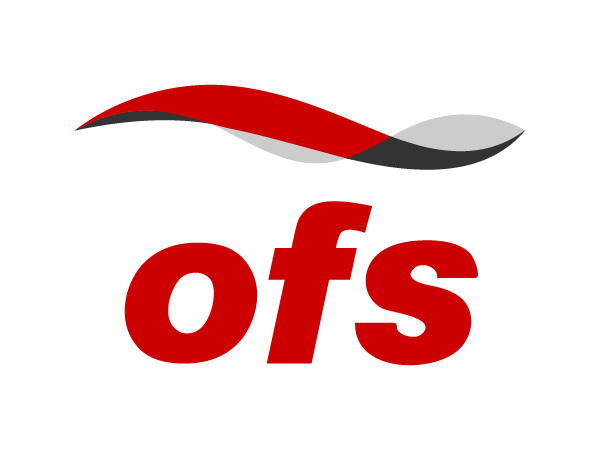
 Many land and oceanic oil operations use temperature sensing to help improve safety and functionality in harsh environments.
Many land and oceanic oil operations use temperature sensing to help improve safety and functionality in harsh environments. 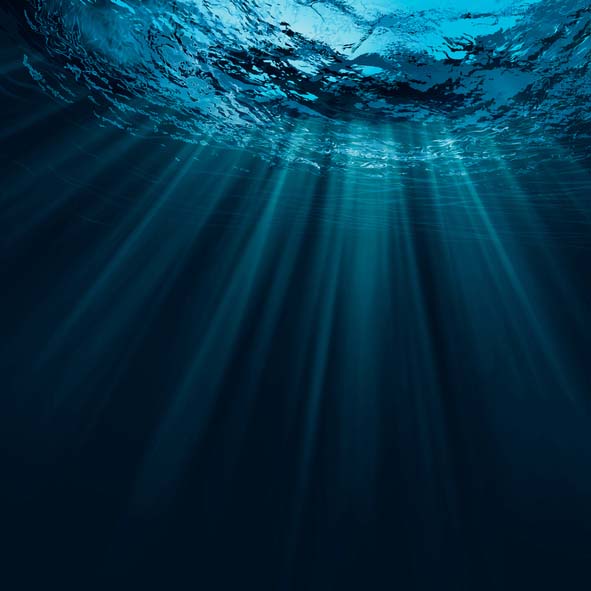 Making an overseas phone call? Using
Making an overseas phone call? Using 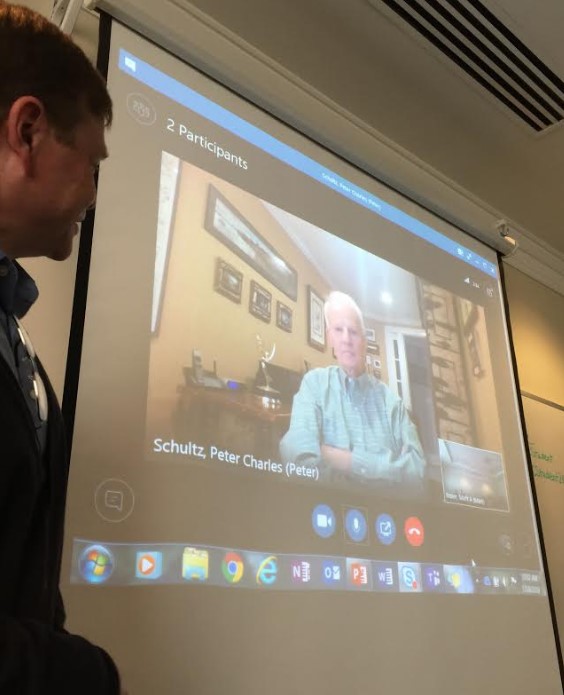
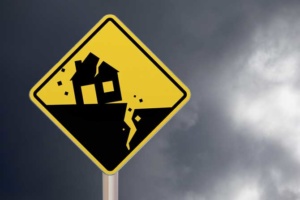 Researchers hope to use networks of unused, dark fiber optic cables to help detect underground sound waves that can warn of an impending earthquake.
Researchers hope to use networks of unused, dark fiber optic cables to help detect underground sound waves that can warn of an impending earthquake. Today the United Nations, its partners and women and girls around the world are marking the International Day of Women and Girls in Science.
Today the United Nations, its partners and women and girls around the world are marking the International Day of Women and Girls in Science.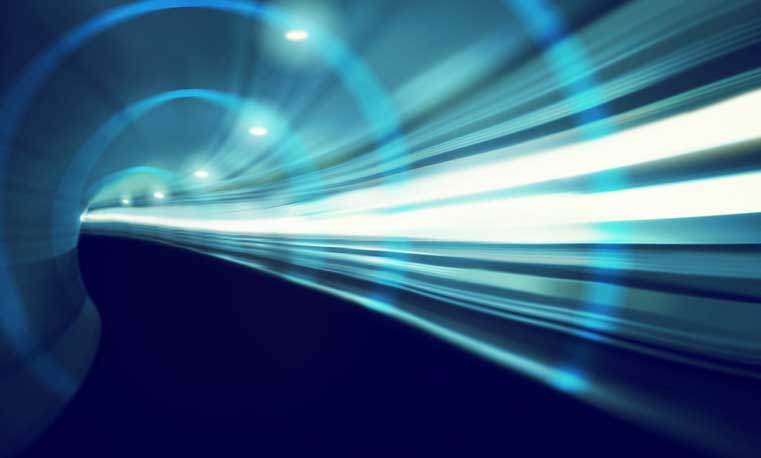
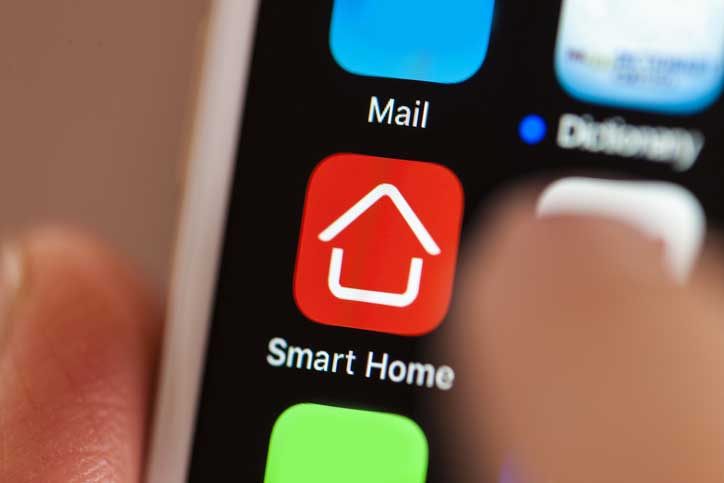 The growth in Fiber to the Home (FTTH) just keeps exploding. In fact, for the first time ever, optical fiber passed DSL in home usage during 2018. Fiber is now the second most-frequent connection for North American home Internet.
The growth in Fiber to the Home (FTTH) just keeps exploding. In fact, for the first time ever, optical fiber passed DSL in home usage during 2018. Fiber is now the second most-frequent connection for North American home Internet. You panic when even a few drops of water fall on your laptop. Everyone knows that water and electronics don’t “mix.” That’s why it seems so ironic that most of the Internet’s “hard” infrastructure lies underwater on the ocean floor.
You panic when even a few drops of water fall on your laptop. Everyone knows that water and electronics don’t “mix.” That’s why it seems so ironic that most of the Internet’s “hard” infrastructure lies underwater on the ocean floor.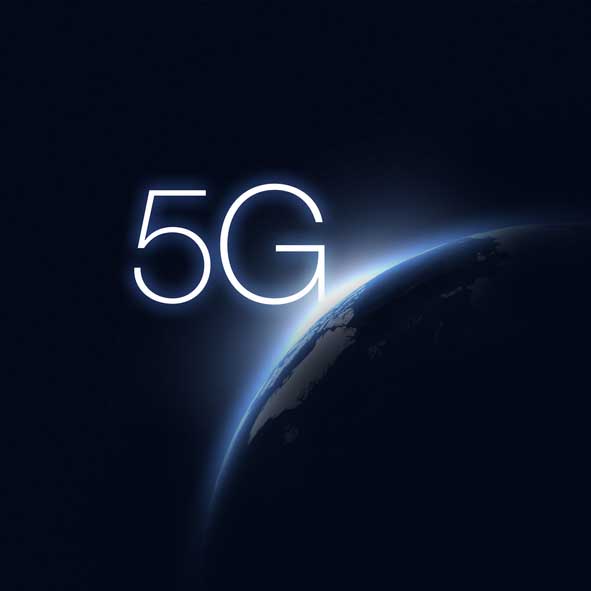 There’s been lots of excitement and even some “hype” around the idea of 5G. But what is it really? Does it mean just
There’s been lots of excitement and even some “hype” around the idea of 5G. But what is it really? Does it mean just